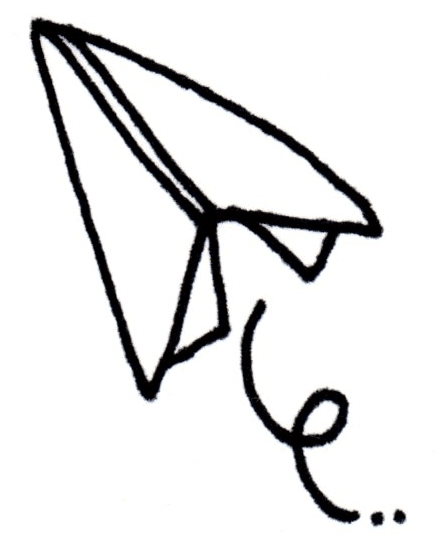Living with an eczema toddler: Top tips to minimise scratching



Toddlers are amazing little people full of a wonderful enthusiasm, energy and innocence. But they lack common sense and live in the moment. They are also self-centred and attention-grabbing and love the word ‘No’, largely because it gets them the attention that they crave. For a parent this can be a really challenging age. It feels impossible to stick to plans and you are frequently frustrated. And if you have an eczema toddler, things can be even more challenging…
What is going on in a toddler’s head?
The brain is a wonderful and complex gadget with the bits relating to self-monitoring and common sense housed in the frontal lobes. These frontal lobes take a while to develop and so have very limited functionality before the age of about 3. Children under 2 just don’t have the capacity to think out possible outcomes from their actions. Those between 2 and 3 only have a very limited forethought and common sense. This is why toddlers are so impulsive and, at times, impossible!
Toddler eczema: stopping the scratching
Given their lack of control and forethought – if a toddler’s eczema is itchy, they are going to do everything they can to scratch regardless of the consequences. Any amount of reasoning isn’t going to change that, because they just don’t understand.
In our experience the only realistic approach to a toddler scratching their eczema is to:
- Minimise the itching with a good skin care regime and by avoiding their eczema triggers.
- Deal with itches promptly. Applying more eczema cream (keep it in the fridge for added effect) to soothe the skin. Apply a cold compress (there are plenty of fun child-friendly versions available). Tap the affected area with your fingers until the itch subsides. Or try distracting you child to take their mind off the itch, ideally with something that keeps their hands busy.
- Protect the skin from the inevitable scratching either by keeping the affected areas covered up, or by covering the hands. ScratchSleeves are great for this.

Tantrums and the eczema toddler
Tantrums are the toddler’s trademark. In younger toddlers, tantrums are usually due to frustration and lack of sense. In older children (3-4 year olds), they can be more intentional and designed to attract attention. The tantrums of younger toddlers tend to be short-lived while the more intentional tantrums can be rather more theatrical and long-winded.
According to the NHS, some people report that getting hot, sweaty, or stressed triggers or worsens their eczema symptoms. Therefore, it makes sense that a common side effect of having a tantrum for an eczema toddler is increased itching (and scratching) caused by getting hot and bothered.
Minimising tantrums
We used a strategy of tantrum avoidance, especially when our eczema toddlers were very young. This didn’t mean caving into every unreasonable toddler demand. Neither did we try to reason with a small person who wasn’t yet capable of 2 step logic. While it’s not possible to avoid all tantrums, but tackling
-
Enable communication
When toddlers are young, many tantrums are the result of not being able to make themselves understood. To combat this we taught both kids baby signing. This early communication definitely helped to minimise the frustration of not being understood. -
Distraction
As soon as a tantrum might be imminent we would find something completely different to distract them with. This could be producing a different toy, asking a question or just turn the toddler in question upside down (always a winner with our kids!). If the trigger for a potential tantrum was a battle of wills, unless there was a really good reason why our way was better, we’d do things their way. If our way was the only way we’d try to at least give then a choice in how we did it our way. If there was no way to avoid a tantrum, we would open a window in an attempt to keep them cool and leave them to it and deal with the itching as it happened. -
Remove the audience
Without an audience, the tantrums didn’t tend to last too long. By largely avoiding or ignoring tantrums when they were young, our kids have never worked out that a full-on public tantrum might be an effective way of manipulating us. They seem to have grown out of the tantrum stage relatively quickly and easily.
Disciplining an eczema toddler
Before the age of about two, toddlers do little that is devious or nasty. They don’t have the capacity to and their ‘naughtiness’ is down to lack of sense. According to an article in Psychology Today, ’56% of parents felt that children under the age of three should be able to resist the desire to do something forbidden, whereas most children don’t master this skill until age three-and-a-half or four.’
A firm word about why what they did was wrong and the ‘disappointed face’ usually does the trick. Toddlers understand more from your body language and tone of voice than they do from the actual words. Make sure you act disappointed as well as saying it.
But there are times when the ‘line’ is crossed and parents resort to the well-known ‘time-out’ technique. For eczema toddlers, who are probably already hot and bothered, this can be an opportunity for scratching. As a result picking your ‘naughty spot’ requires some forethought. You don’t want to inadvertently encourage your eczema toddler into more scratching. Choose somewhere cool where you can keep a discrete eye on the miscreant. If possible avoid having them sit on a carpet as they are excellent for scratching with. This is especially true if house dust mites are a problem for your toddler. It also helps to have something to fiddle with close at hand to keep their hands occupied.
We use the doormat by our incredibly drafty front-door. It is cool, has clearly defined boundaries. It’s not scratchy (it’s a cotton Turtle mat) and is out of the way of the rest of the house. However, we can see it from a number of places and there is a pot plant with cool stones covering the soil next to it. The stones invariably end up on the floor but we put them back together at the end of the time-out.
Potty training an eczema toddler
There’s plenty of guidance on how to go about potty training, but with an eczema toddler there are some other considerations to take into account. The main one being that sitting an eczema toddler on a potty is a great opportunity for scratching.
- Do nappies aggravate your toddler’s eczema? This isn’t always the nappy area itself, sometimes irritation appears just above the nappy, especially on their sides. According to the John Hopkins Medicine website, it can sometimes be the urine or the poo in the nappy that irritates the skin rather than the nappy itself. If so, it might be a good idea to start nappy training early (or find a nappy which doesn’t irritate).
- If laundry detergents or toiletries are a trigger for your toddler’s eczema then delaying things until your toddler is well and truly ready may work better, as frequent cleaning up of accidents may well aggravate toddler eczema.
- If your little one has itchy legs, the long periods sat on a potty without trousers or tights to protect itchy skin may well result in more scratching. In this case, consider delaying potty training until they have the muscle strength (and desire, peer pressure can be really useful) to learn good bladder and bowel control quickly. This will mean that they will be able to learn to ‘go’ as soon as they sit down relatively quickly. Alternatively, you could cover their hands up with ScratchSleeves while they are on the potty.
- Pull-ups often are not as absorbent as regular nappies which can result in skin irritation and the elasticated sides can also irritate eczema. Consider going straight from nappies to pants.
On the plus side – frequent trips to the potty gave us a great opportunity to moisturise our eczema toddler’s legs!
Here at ScratchSleeves we don’t just share our experiences of bringing up an eczema child and favourite allergy friendly recipes, we also manufacturer and sell our unique stay-on scratch mitts and PJs for itchy babies, toddlers and children. We now stock sizes from 0-16 years in a range of colours. Visit our webshop for more information.
The Calm Skin Guide
Love our blog? It's also available in book format with:
- First hand accounts from parents & medical professionals
- Easy navigation
- Comprehensive index
- Additional material
Signed copies available at no extra cost
Written by:
Interesting article? Don't keep it to yourself...
Read next...
You may also find helpful...
Quick buy


Multi Buy Discount

Spend between £30 - £60 and save 5%
Spend between £60 - £120 and save 10%
Spend over £120 and save 15%
Discount automatically applied at checkout
No Quibbles Guarantee

ScratchSleeves abide by a no quibbles guarantee.
Free UK Postage

Free packing and postage on all UK orders. For overseas orders to Europe postage is from £3.50, to USA is £6.50 and to the rest of the world, from £3.75.






